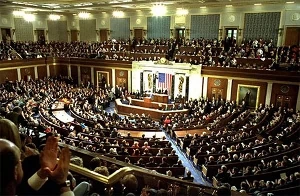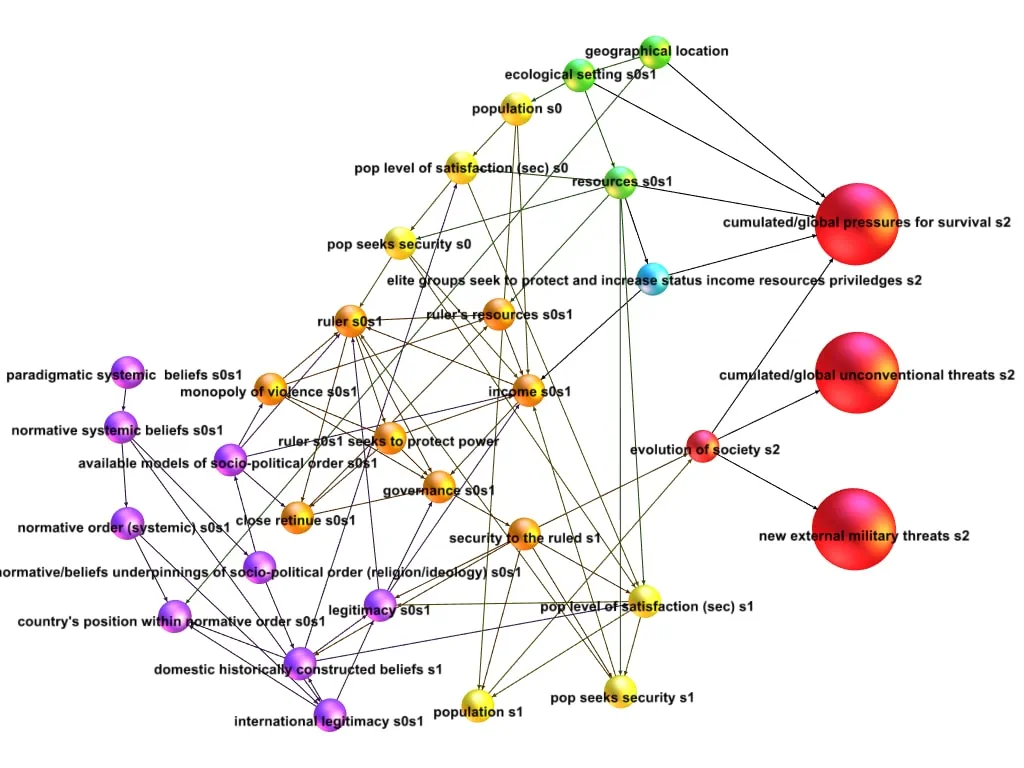In this day and age of speed, not to say haste, unequally shared resources and wish to relatively easily obtain answers to complex questions, we are faced in strategic foresight and warning analysis (or political risk analysis) with a very serious challenge. We must choose a methodology that:
- allows for a “good enough” analysis (Fein, 1994), i.e. an analysis that will allow for proper decisions to be taken;
- can be used relatively quickly (the one minute crystal ball prediction will however remain impossible);
- can be used relatively easily, without scaring both analysts and officers;
- can be used, for most actors, relatively cheaply;
- keep the analyst in control (most of the time opaque software and tools are regarded with suspicion);
- allows for team and collective efforts;
- transmits a minimum of knowledge in political science and international relations, as sometimes – or often – people analyzing political and international issues and related risks come from diverse backgrounds.
Related
Towards an Operational Methodology to Analyze Future Security Threats and Political Risk (1)
Methodology to Analyze Future Security Threats (2): a Game of Chess
How to Analyze Future Security Threats (3): Scenarios as an Organic Living System
How to Analyze Future Security Threats (4): Scenarios and War
How to Analyze Future Security Threats (5): Scenarios and Crises
Building upon the diverse open source methods and tools existing in the field (Glenn & Gordon, 2009), which methodology can we choose or design that will fulfill these criteria? With this post and the next ones in the series, we shall operationalize further the foresight and warning methodology described and explained previously to build he model, create scenarios, and develop indicators for warning (steps 2, 3 and 5 of a more general analytical method). Furthermore, this approach should also be useful to classical analysis (i.e. an analysis that does not start by making the model explicit, but moves directly to writing), because it may help checking or developing the implicit model used for analysis.
The security of organised groups at the core of analysis
Let us remember that the overall theme or meta-issue that interests us is the security of people organised in groups, stemming from the need for survival of every individual being.* More narrowly, we are focusing on nation![An Air raid shelter in a London Underground station in London during The Blitz. By US Govt [Public domain], NARA, 195768, via Wikimedia Commons Red (Team) Analysis, national security, political risk analysis, strategic foresight and warning, strategic warning](https://redanalysis.org/wp-content/uploads/2013/11/Blitz_West_End_Air_Shelter-1.jpg) al security, as a nation is one specific form of group. This idea of security of organised groups will be at the core of each of our strategic foresight and warning or risk analysis, for most of our analytical questions (see Strategic Foresight & Warning Analysis). If you are analyzing water security and a question such as “How will water problems (shortages, poor water quality, or floods) impact US national security interests over the next 30 years?”, or energy security and “How will energy related problems impact country X national security interests (or company A interests) over the next 20 years?” or the future political situation in Niger, Egypt, Syria, China, Japan, Spain or whatever country within the next five years and how it could impact your country or your organisation (for example a NGO) or company’s activity and interests, or the potential for war in the Middle East or in the Far East within the next ten years, at the core of your investigations there is the need for survival and then security of organised human groups.
al security, as a nation is one specific form of group. This idea of security of organised groups will be at the core of each of our strategic foresight and warning or risk analysis, for most of our analytical questions (see Strategic Foresight & Warning Analysis). If you are analyzing water security and a question such as “How will water problems (shortages, poor water quality, or floods) impact US national security interests over the next 30 years?”, or energy security and “How will energy related problems impact country X national security interests (or company A interests) over the next 20 years?” or the future political situation in Niger, Egypt, Syria, China, Japan, Spain or whatever country within the next five years and how it could impact your country or your organisation (for example a NGO) or company’s activity and interests, or the potential for war in the Middle East or in the Far East within the next ten years, at the core of your investigations there is the need for survival and then security of organised human groups.
Actually, if water is an issue in terms of SF&W, if we analyze it, it is because we deal with the survival of human beings, and, as far as human beings are concerned, water is crucial for life. The same logic is at work for energy, as masterly shown, for example, by Thomas Homer Dixon (2006), or for any other issue deserving to be analyzed we would identify. Were we from another planet where species answer to different biological needs, water and energy might be irrelevant, and replaced by different problems.
Using the same model of fundamental political dynamics for each analysis
Thus, at the heart of any of our analyses we need to think through or with the dynamics underlying any polity. The aim here is not to argue upon the universality of a model, but to give practical advice, grounded as much as possible in social science findings and understanding, to analysts who must deliver strategic foresight and warning or risk analysis for their decision and policy-makers.
The very basic story that, building upon Weber, Moore, Elias, Mann, Ertman and others (see state building and governance bibliography), seems to be true across a large spectrum runs as follows:** individuals, inhabiting a specific geographical and thus ecological environment, live in a group (and more largely in a society) to improve their odds to survive and more generally to see their needs met. This group entrusts political authorities with the mission to ensure its security. In exchange for the successful accomplishment of its mission, the ruler continues to rule, and receives various benefits such as status and resources. The ruler also extracts from the population resources, as means to carry upon its tasks, and exerts and keeps a monopoly on the means of violence, which is also used for the extraction of resources. If the application of violence is perceived as just and in agreement with historically constructed beliefs for this specific society, then it is seen as legitimate. Furthermore if the extraction of resources is also perceived as just, again according to the historically held beliefs of the group and if the ruler truly ensures the security of the group, then the rule is perceived as legitimate. Legitimacy, in turn will strengthen the right of the ruler to rule, its power and ability to govern.
 To this we should add that other powerful individuals or actors will, most of the time, compete with others, notably with the ruler, to increase their own status, privilege and resources, and, ultimately, for supremacy (see for an explanation of the dynamics related to the interactions between elite groups and ruler The Chronicles of Everstate, Setting the stage II, part 2 of the post). Meanwhile some groups may form within society and have competing demands the ruler needs to balance, unless tension and escalation arises and end up threatening the security of the whole group and the rule of the ruler.
To this we should add that other powerful individuals or actors will, most of the time, compete with others, notably with the ruler, to increase their own status, privilege and resources, and, ultimately, for supremacy (see for an explanation of the dynamics related to the interactions between elite groups and ruler The Chronicles of Everstate, Setting the stage II, part 2 of the post). Meanwhile some groups may form within society and have competing demands the ruler needs to balance, unless tension and escalation arises and end up threatening the security of the whole group and the rule of the ruler.
On this polity, various kinds of pressures, intrinsic (stemming from the very evolution of the polity) and extrinsic (originating from outside the polity), will exert themselves.
Of course, in reality, things are more complex, but they tend to be variations and developments built over those fundamental dynamics.***
Thus, the good news is that, for the analytical phase during which we build our model, part of this model will not have to be created back from scratch, but will already be “almost” available. We shall, most of the time, be able to use the story told above and its corresponding graph (as shown below), adapting them to the specific issue or problem we are analyzing, as we shall, practically, see with the next post.
——-
* Barrington Moore brilliantly explains those fundamental dynamics in the first chapters of Injustice: Social bases of Obedience and Revolt, (London: Macmillan, 1978).
** For a detailed and longer development, see Helene Lavoix, “Enabling Security for the 21st Century: Intelligence & Strategic Foresight and Warning,” RSIS Working Paper No. 207, August 2010, pp.3-6.
*** A more explicit model, yet reduced (compared with reality) model, is used for the Chronicles of Everstate and could be chosen as basis here. However, it is already quite large and as long as we do not have computerized means to manipulate and use it easily, it may prove too complex to satisfy our initial criteria.
——-
Helen Fein’s idea of a “Good Enough Model” ‘Tools and Alarms: Uses of Models for Explanation and Anticipation’, Journal of Ethno-Development, 4 (1), pp. 31-35, (1994), Appendix 2.
Jerome C. Glenn and Theodore J. Gordon, The Millennium Project: Futures Research Methodology, Version 3.0, Ed. 2009.
Thomas Homer-Dixon, The Upside of Down: Catastrophe, Creativity and the Renewal of civilization (Knopf, 2006).
Credit header image: A chess game between Prime Minister Menahem Begin and U.S. National security adviser Zbigniew Brzezinski in Camp David during the peace negotiations between Israel and Egypt. By Government Press Office (GPO) http://www.flickr.com/people/69061470@N05 CC-BY-SA-3.0 , via Wikimedia Commons



